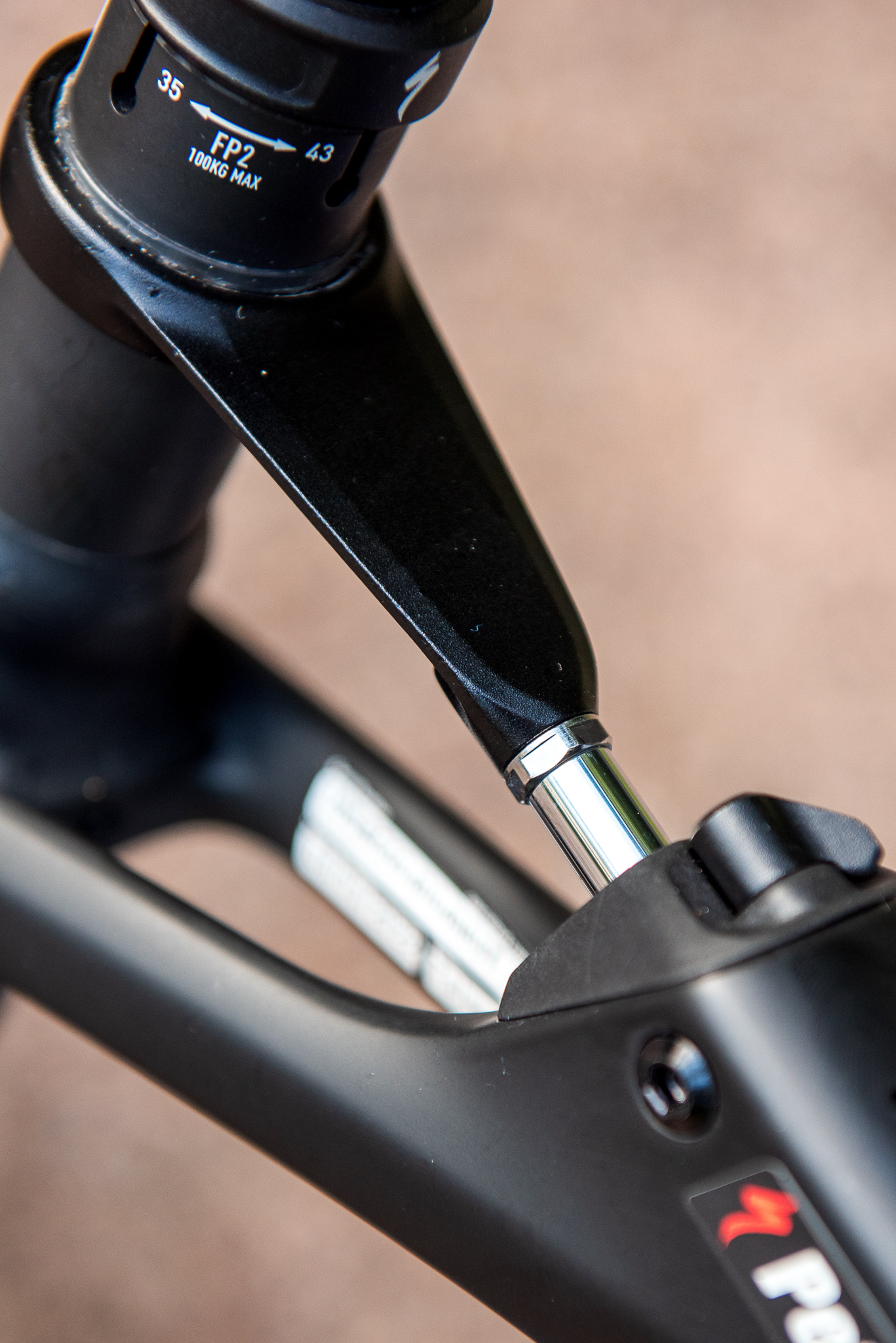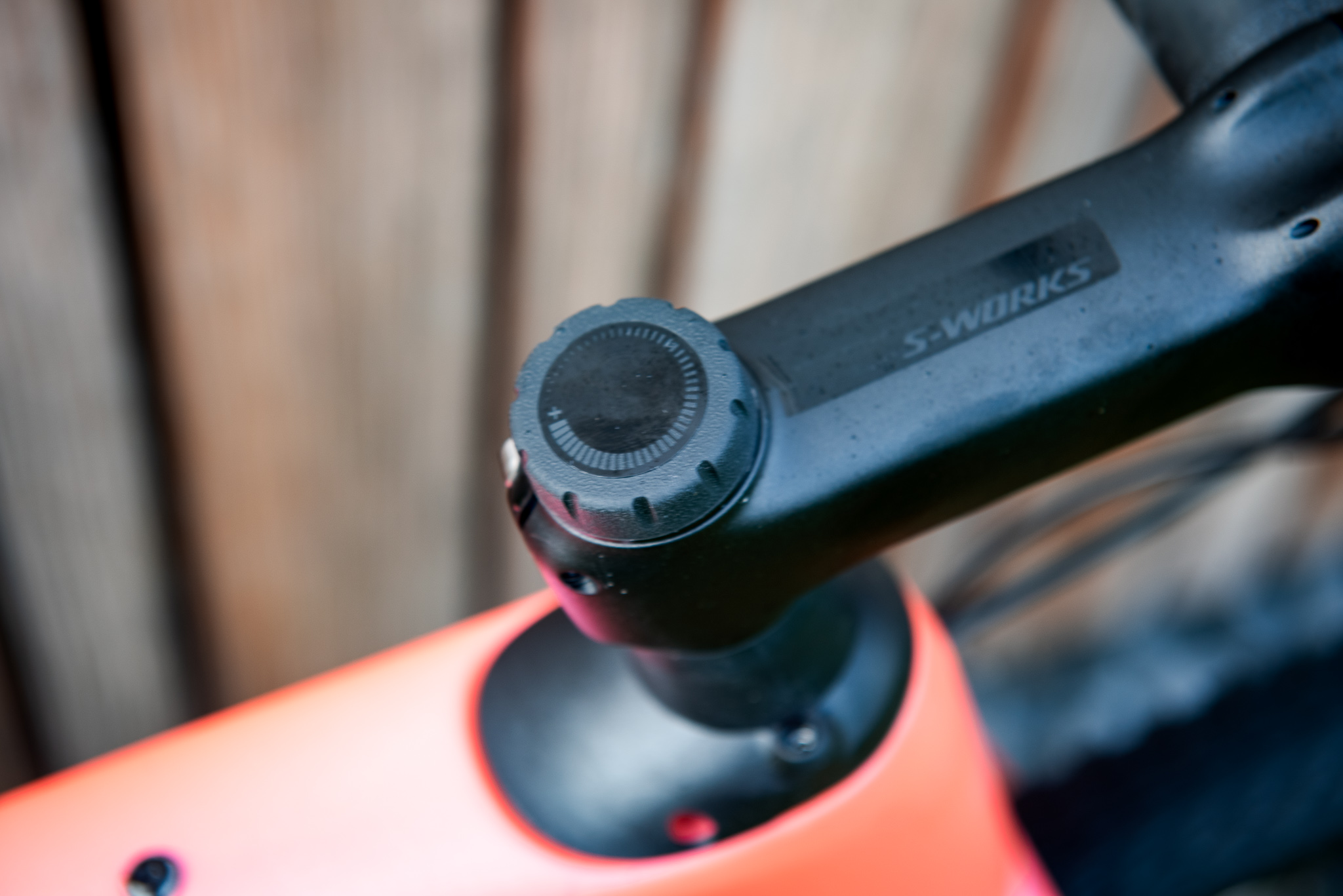Early Verdict
The STR’s rear suspension comes at a cost on price, a small weight penalty and perhaps aesthetic appeals, I’d consider those trade-offs to be a reasonable exchange for the broad performance gains on offer
Pros
- +
Better ride quality
- +
More ride versatility
- +
Better all-around performance
- +
Impressive comfort across all terrain
Cons
- -
Added complexity
- -
Increased price
You can trust Cyclingnews
You could be forgiven for getting lost in the debate over who exactly invented the gravel bike. Some would argue that those scaling the Alps in the middle of the twentieth century on steel road bikes, laden with panniers atop 19mm tubular tyres were the pioneers. The most recent trend for gravel-specific bikes, though, arguably landed around 2014 when the Specialized Diverge was early among the pioneers.
Launched within a few months of the GT Grade, and labelled as an “adventure bike”, the Diverge’s top-tier carbon offering was quick to be updated to an S-Works tier high-performance machine, complete with Specialized’s Future Shock front suspension unit.
Despite relatively few overall changes to its wider design, the latest Diverge STR represents the greatest leap forward in the Diverge’s history since its advent. Not only is this the first Diverge with rear suspension, but the very first rear suspension system developed by Specialized for either road or gravel.
Of course, this isn’t the first attempt to integrate rear suspension into a gravel bike. The Niner MCR 9 RDO, for instance, was a well-discussed foray into a more involved rear suspension system. It was often regarded as solving a problem that didn’t exist. Specialized’s solution promises the gains of rear suspension rethought for gravel - meaning much less weight, less pedalling sag and no compromises in rigidity and overall performance.
In that sense, Specialized’s Rear Future Shock probably calls to mind more subtle solutions like Moots’ YBB wishbone suspension system, mirrored by Pinarello’s DSS 1.0. Both of those failed to break into mainstream design, while Pinarello abandoned the DSS 1.0 altogether.
So will Specialized’s rear suspension prove more successful?
Rear Suspension

The Rear Future Shock that sits in the back half of the Diverge STR frame is a slightly jarring sight. It looks mechanical, exposed and almost frail, on first inspection. But this complex system is far from frail and does a great deal for the Diverge’s balance of performance and versatility.
“It would only fail in fatigue,” explains Specialized’s Creative Specialist, and the brains behind the project, Chris D’Aluisio when I asked about the potential for the thin alloy tendon to break. “We've used the same one in testing for so long, it has gone through millions and millions of cycles. It doesn't go through enough flex to fatigue. That's why we have so much confidence in it.”
On first impressions, I felt that a fairing over the unit would make it more amenable to the majority of consumers, but at the same time, I personally liked the raw almost industrial aesthetics.
While the suspension system may look like it’s entirely housed within the top tube, the suspension actually works based on engineered seat tube flex from the bottom bracket – the protruding unit of the Rear Future Shock is essentially just the damper for the system. The result is 30mm of rear fore-and-aft travel accompanied by hydraulic damping, while the Future Shock 2.0 up front continues to offer 20mm of vertical travel.

The system reminded me of the Trek Madone 9 Series, which I tested extensively on its release. However, the Rear Future Shock is pitched at a much more aggressive terrain, rather than the road scarring or cobbles that a Madone may battle. That shows, too, as the Rear Future shock cushioned the road terrain substantially from the outset.
Specialized boasts that compared to the previous iteration, the Diverge STR reduces vibration at the saddle by over 20%.
The damper system means that the Rear Future Shock pushes back against the recoil in the system, so there isn’t really a sense of springing with the disturbances of the road. To make sure there is a sense of balance, and no detachment between the front and rear, both the Future Shock and Rear Future Shock are adjustable. The rear suspension’s level of flex can be altered by moving the seat collar position –though the actual seatpost (or frame post, as Specialized is calling it) clamp is in fact below the bottle cage mounts.

New build

Elsewhere, the STR could be difficult to pick apart from the previous Diverge, but the differences are there - up close.
The Rear Future Shock has led to few necessary geometry tweaks compared to the last generation Diverge, with the BB drop increasing from 80 to 85mm, while the chainstay length has increased from 425mm to 429mm. The seat tube angle has also become 0.5° steeper to offset the intended sag on the frame tube. The main differences in the silhouette, though, come down to spec.





The Diverge STR will be available at three tiers - S-Works Diverge STR, Diverge STR Pro and Diverge STR Expert. The S-Works version comes with Sram Red eTap AXS 1x shifters alongside a Sram XX1 Eagle rear derailleur and cassette in a ‘mullet’ 1x setup.
Our STR Expert test model used SRAM Rival shifters and a GX Eagle derailleur, complete with the third 'C' tier of Roval’s carbon Terra wheels accompanied by Specialized’s Tracer Pro 2BR tyres.

What struck me on our first rides was how premium the Expert tier of Diverge felt, so much so that at times I felt I was riding an S-Works level bike. That’s a credit to the trickle-down of SRAM’s eTap groupsets, but also how well Specialized has specced the range of STR bikes.
While there is a minor weight penalty of a few hundred grams to the previous Diverge, it really is not detectable. In fact, the rigidity of the overall system meant that this fundamentally feels like a light bike.
Given the Diverge STR’s likely bikepacking appeal, it’s no surprise to see a cohort of bottle cage mounts, and the bike would lend itself well to the new Specialized x Fjällräven bike packing bag range. Some would argue that adding pannier and mudguard mounts would have added something to the broad appeal. However, it’s clear that the Diverge STR is geared at performance and competitive gravel riding, so perhaps we shouldn’t expect to see a pannier mount here any more than on a Tarmac SL7.
There’s no doubt that the frame’s development and extra technology is reflected in the price tag, and it’s slightly strange to see our entry-level Expert tier priced at £7,500, €7,500/ $7,500 despite a SRAM Rival groupset. However, given how well the wider spec performs, and how little is lost on overall performance compared to the S-Works tier at £13,000/ €15,000/ $14,000 – we can look beyond the groupset moniker.
Performance

I rode the Diverge STR at Specialized’s global launch in the Black Forest in Germany. The terrain offered a mix of challenging singletrack, alongside lengthy road segments and higher-speed-packed gravel stretches.
I rode the previous two generations of Diverge, both at S-Works level, and both for many months. The overall impression I had of the STR was how much more confident the suspended rear rendered the ride experience.
Riding the Hotchillee Rainmaker Rollercoaster on the S-Works Diverge in 2017, I found that while the Future Shock 2.0 numbed the aggressive jolts of more challenging singletrack, the rear end of the bike was often just too stiff, and I would frequently slow to a crawl on steep loose descents.
On the STR, by contrast, I was constantly pushing descents harder and feeling more confident to remain seated over loose ground where previously I would have hovered precariously above the saddle. The difference that has made to control and handling was dramatic.

The Diverge STR simply feels planted. I’ve spent the last few years riding less gravel than I would like, but I was quickly finding myself riding with more confidence than I can remember. I felt the STR was gently expanding the terrain I’d consider comfortable, pushing more technical trails within my grasp.
Beyond that, though, there’s a general level of comfort throughout the ride that the Rear Future Shock bestows which means I felt I was preserving more energy and able to enjoy the gentle rumble of rougher terrain.
I would have enjoyed testing the adjustment of the rear unit to really fine-tune the level of compliance, but I felt this would be better left for a longer test in a more controlled environment.

While comfort and controlled descending were the main attraction of the STR, this is also a bike that encourages the rider to stamp on the pedals with rewards of ample power transfer. Just like Specialized’s Tarmac SL7, there’s a unique stiffness to the Diverge STR that means it springs up to speed without hesitation – one moment it was an armchair, the next an F1 car.
On long ascents, the lack of bounce in the Rear Future Shock was really noticeable, as the slow burn of long climbing efforts wasn’t dampened by shocks. That’s a stark contrast to more established mountain bike solutions. I enjoyed steep climbs where the overall rigidity of the frame, and traction improvements of the tyres and suspension made it feel light and responsive – climbing was no chore.
As gravel bikes separate into those more geared to multi-day adventure against those set to single-day racing, the Diverge strikes me as an option that would easily straddle both worlds. The Diverge STR could ride almost anything you could throw at it, but is also fundamentally a fast performance bike.

Early verdict
The Rear Future Shock is one of Specialized's most stark developments in design in Specialized’s road or gravel lines.
At the same time, many newer gravel bikes have increasingly peeled back design features to rely more exclusively on tyre width and pressure to control ride quality. That approach, seen on the S-Works Crux for instance, is simple and appealing for many reasons.
But while the STR’s rear suspension comes at a cost on price, a small weight penalty and perhaps aesthetic appeals, I’d consider those trade-offs to be a reasonable exchange for the broad performance gains on offer. The Diverge can ride more terrain, offers more confidence and stability, while also making a fundamental step forward in ride quality.
Coupling both increased comfort with improved performance is an ever-elusive goal in bike design, and it’s hard to argue that Specialized hasn’t nailed it.
Ready to hit the road with top-tier equipment? Check out our Specialized coupons for great deals on bikes and accessories.

Peter Stuart has been the editor of Cyclingnews since March 2022, overseeing editorial output across all of Cyclingnews' digital touchpoints.
Before joining Cyclingnews, Peter was the digital editor of Rouleur magazine. Starting life as a freelance feature writer, with bylines in The Times and The Telegraph, he first entered cycling journalism in 2012, joining Cyclist magazine as staff writer. Peter has a background as an international rower, representing Great Britain at Under-23 level and at the Junior Rowing World Championships.
What is a hands on review?
'Hands on reviews' are a journalist's first impressions of a piece of kit based on spending some time with it. It may be just a few moments, or a few hours. The important thing is we have been able to play with it ourselves and can give you some sense of what it's like to use, even if it's only an embryonic view.
